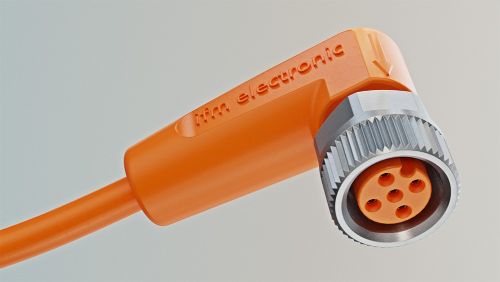- Connection technology by application
- Technology overview
Connection technology overview
Connection technology must supply devices with power, reliably transport signal and withstand the rigors of different environments. ifm’s ecolink product line is designed with this in mind.
Overview of ecolink products, environments and features
Connection types:
Female and male cordsets
Patchcords
Wireable connectors
Wiring blocks
All ecolink products feature a ratcheting coupling nut design that maintains connection even in high vibration areas, a mechanical end-stop to prevent overtightening and deformation of the o-ring seal and materials of construction to resist chemical attack in harsh environments.
The innovative LED design of ecolink products offers high visibility even in well-lit areas. The black translucent housing of our connector allows for a much clearer view of the LEDs. Compare the images below.
M12 ecolink products have a unique alignment aid molded into the connector head. The arrow on the connector head points to the location of the keyway. This makes connection to the mating key much easier.

Shielded vs. non-shielded cables
Shielded cables reduce the influence of electromagnetic noise by isolating the cable conductors.
Shielding connected to only one side of the cordset provides protection against low-frequency electric fields and shielding connected to both sides provide protection against high-frequency noise depending on cable length.
In both cases, the shield at the flying leads of the cable must be connected to earth ground. Below are two examples of how to accomplish this.
ifm offers both types of shielded cordsets.
Wiring best practices
The following notes are based on industry recommendations.
- Separate low voltage cables and wires from high voltage cables.
- Limit long cable runs. Long wires act as antennas. Low voltage wires become receive antennas and high voltage wires become transmit antennas. High voltage wires can induce a signal onto a low voltage wire, so minimize the distance that low and high voltage wires run parallel to each other.
- Separate DC voltage from AC voltage.
- Use shielded cables in areas where high electromagnetic interference can occur.
- Label all terminated wires to match electrical schematics.